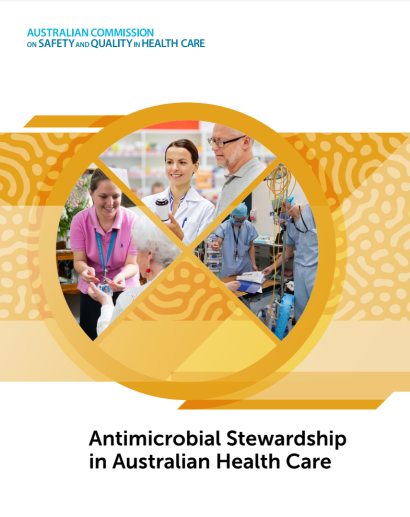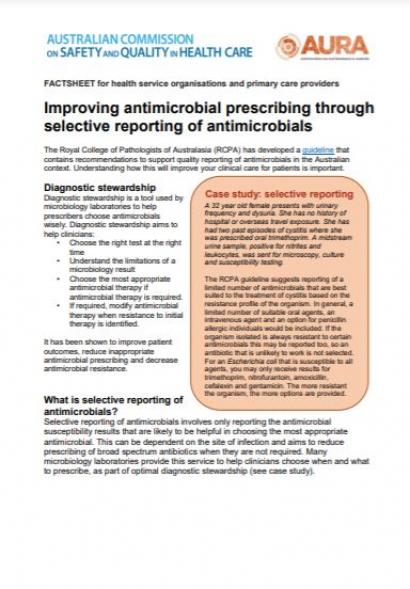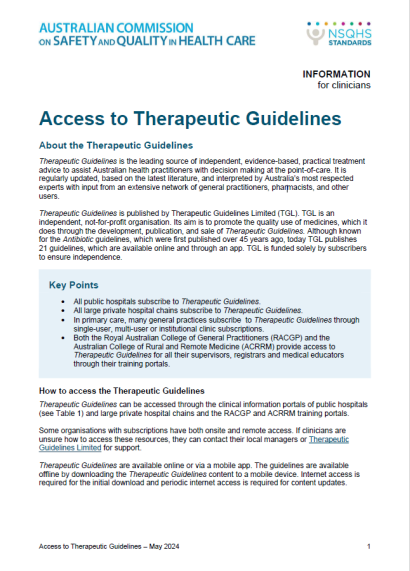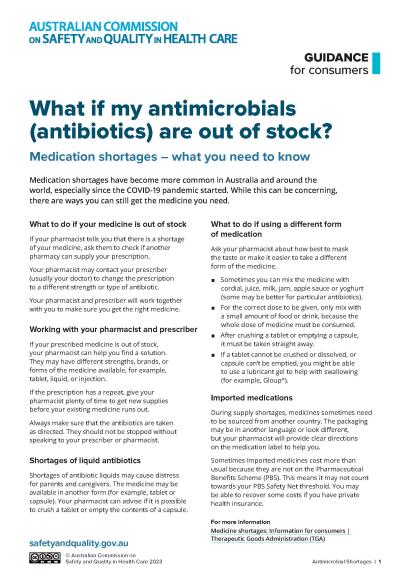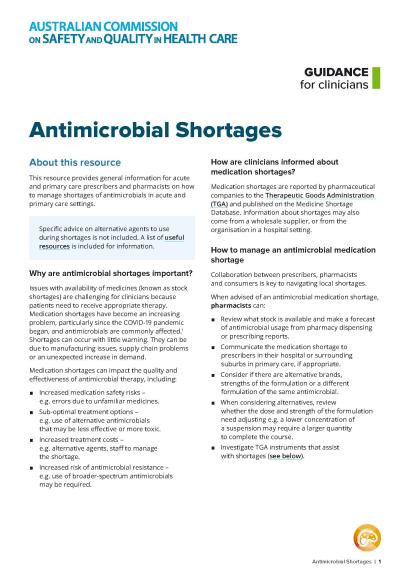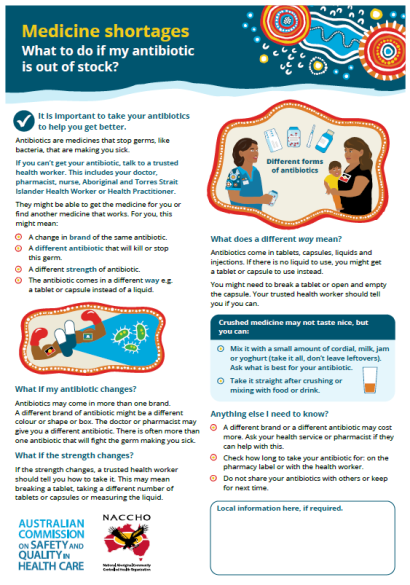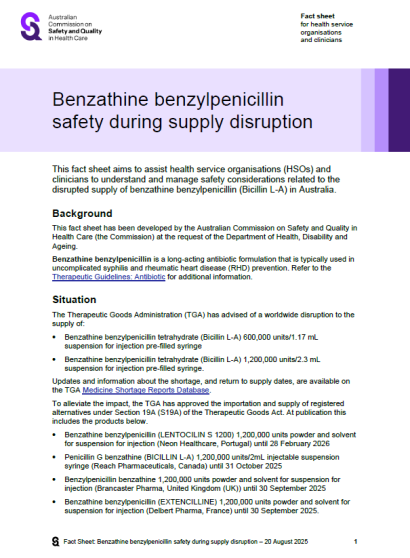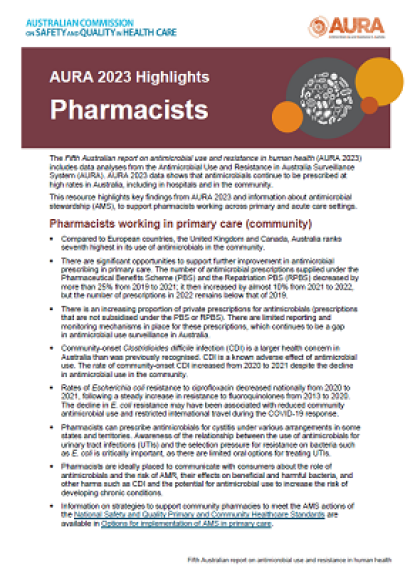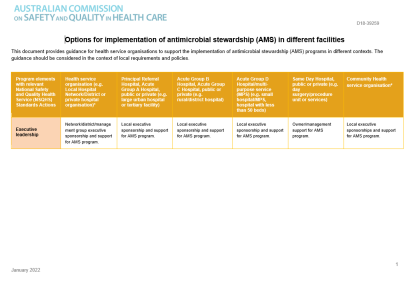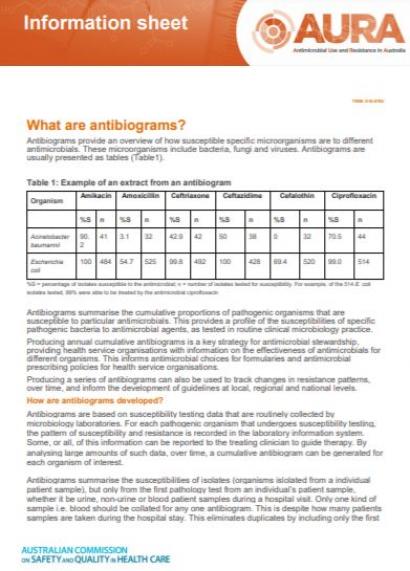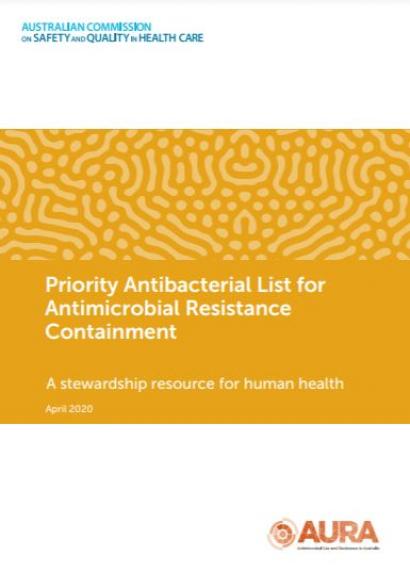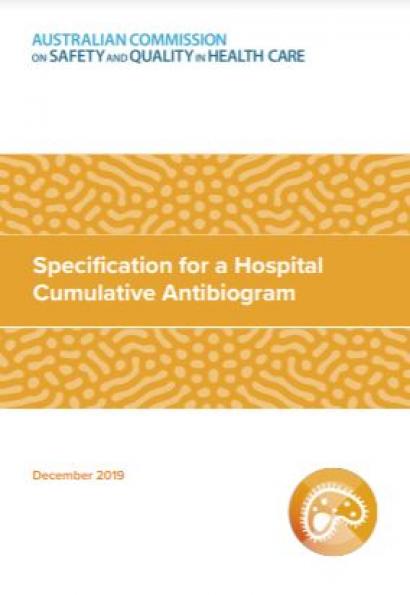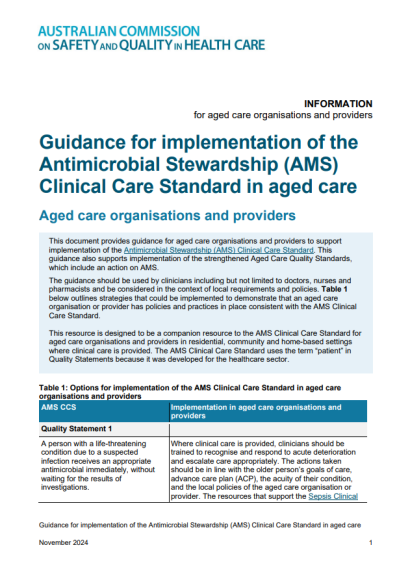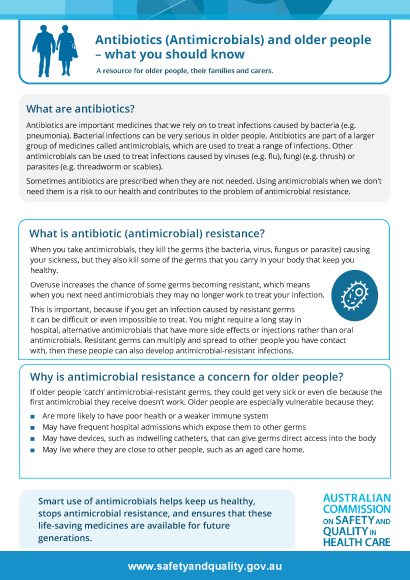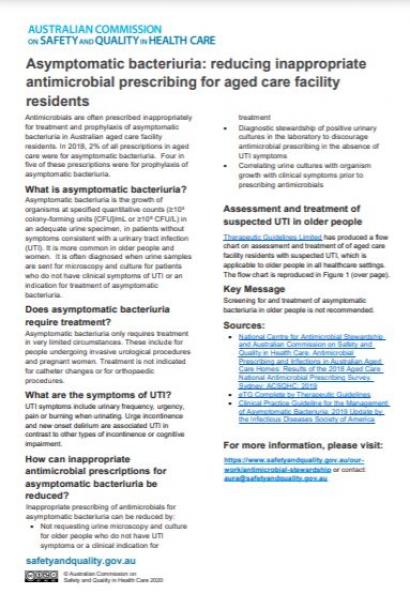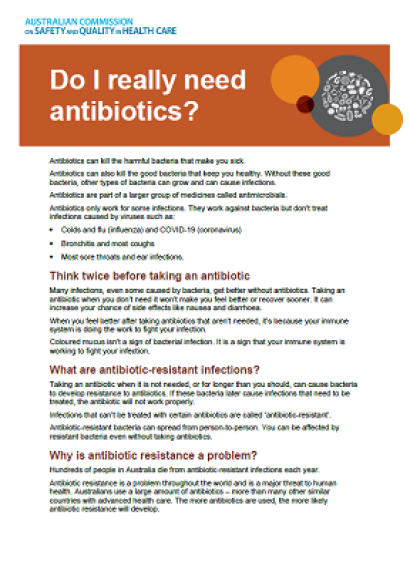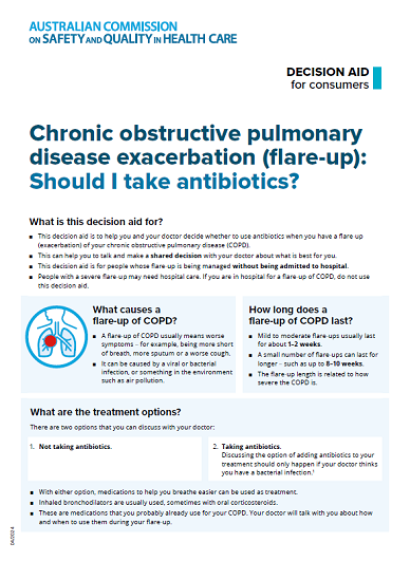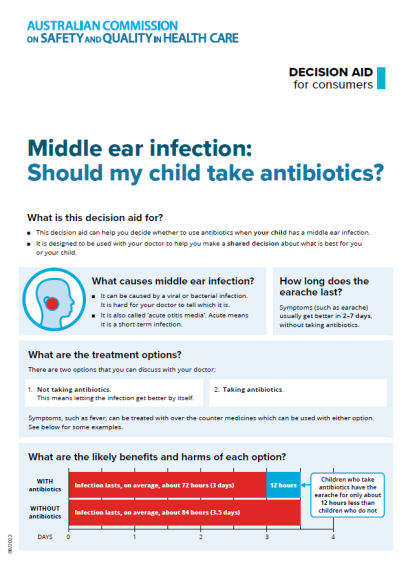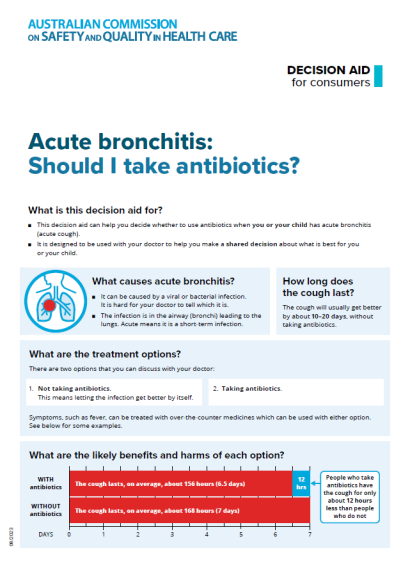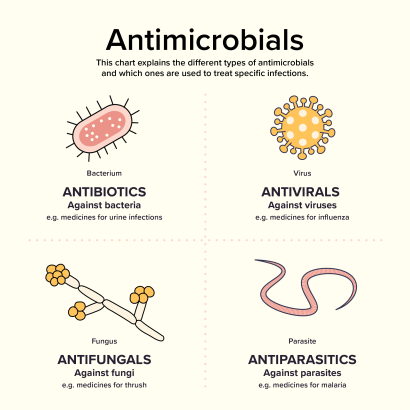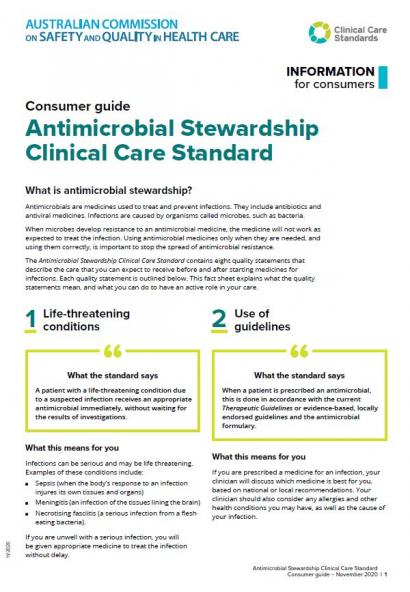Antimicrobial Stewardship (AMS) resources and links
This page includes links to Australian and international resources to support antimicrobial stewardship (AMS) programs in health service organisations and in aged care and primary care. AMS programs help to improve patient safety and in the prevention and control of antimicrobial resistance (AMR).
Key resources
Other Commission resources
For more information:
- AURA 2023: Fifth Australian report on antimicrobial use and resistance in human health - Report
- Antimicrobial Stewardship in Primary Care
- Antimicrobial Stewardship Clinical Care Standard
- World AMR Awareness Week Resources
- National Safety and Quality Health Service Standards
- Consumers - Information on Antimicrobial Resistance
State and territory AMS resources
VIC
No publicly available sites
ACT
No publicly available sites
VIC
No publicly available sites
ACT
No publicly available sites

